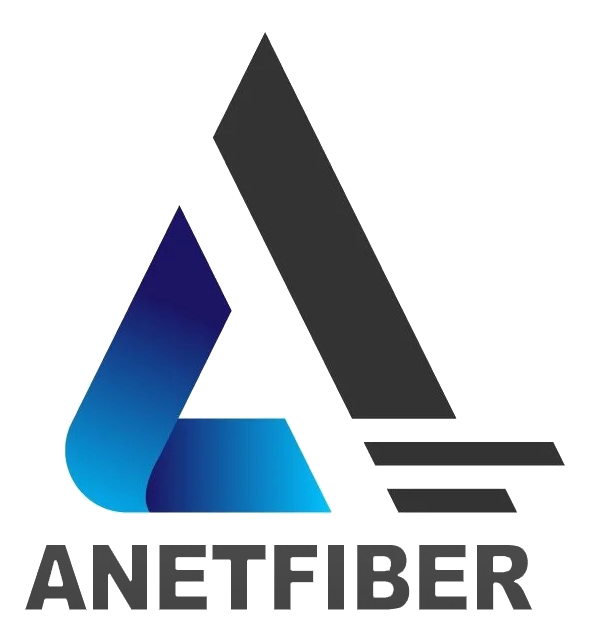5 Key Differences Between Single-mode and Multi-mode Optical Patch Cables

Understanding Optical Patch Cables
When delving into the world of networking and telecommunications, understanding the role of optical patch cables is essential. These vital components play a crucial role in ensuring seamless data transmission across various systems.
What Are Optical Patch Cables?
Optical patch cables, also known as fiber patch cables, are specialized cables used to transmit data through light signals. They are designed to connect different network components, such as switches, routers, and servers, using fiber optic technology. The basic function of these cables is to facilitate high-speed data transfer over long distances with minimal signal loss.
The Importance of Fiber Optic Cable Modes
In the realm of fiber patch cable types, the distinction between fiber optic cable modes holds significant importance. Two primary modes exist: single-mode and multi-mode. Each mode possesses distinct characteristics that cater to specific networking requirements.
Single-mode vs. Multi-mode
The fundamental difference between single-mode and multi-mode optical patch cables lies in their ability to carry light signals. While single-mode cables allow only one pathway for light transmission, multi-mode cables enable multiple pathways for light to travel. This variation directly impacts factors such as distance coverage and transmission speed.
Exploring Single-mode Fiber Patch Cables
Single-mode fiber patch cables, often abbreviated as SMF cables, are an integral part of modern networking infrastructure. Understanding the core characteristics and applications of these cables is crucial for optimizing data transmission efficiency.
Core Characteristics of Single-mode Fiber Patch Cables
The primary characteristic that sets single-mode fiber patch cables apart from their multi-mode counterparts is the core size. Single-mode cables have a much smaller core compared to multi-mode cables, typically around 9 microns. This reduced core size allows for a more focused and direct light propagation, resulting in minimal signal dispersion and higher transmission speeds over long distances.
In addition to the core size, the light propagation in single-mode fiber patch cables follows a straighter path, enabling the transmission of light signals with minimal loss. This characteristic makes SMF cables ideal for applications that demand high precision and reliability in data transmission.
Applications and Advantages of Single-mode Fiber Patch Cables
Long-Distance Communication
One of the key advantages of single-mode fiber patch cables is their ability to support long-distance communication effectively. The focused light propagation within the smaller core enables these cables to maintain signal integrity over extended distances without significant degradation. As a result, they are widely used in telecommunications networks, including long-haul data transmission and intercontinental connectivity.
High-Speed Data Transmission
Another notable application of single-mode fiber patch cables is their role in facilitating high-speed data transmission. The precise light propagation characteristics allow for the efficient transfer of large volumes of data at incredibly high speeds. This makes SMF cables indispensable in scenarios where rapid data exchange is essential, such as high-frequency trading systems and cloud computing environments.
Diving into Multi-mode Fiber Patch Cables
As we delve into the realm of multi-mode fiber patch cables, it becomes essential to grasp their unique structure and the specific benefits they offer in networking and data transmission.
Understanding the Structure of Multi-mode Fiber Patch Cables
Core Size and Multiple Light Paths
Multi-mode fiber patch cables are characterized by a relatively larger core size compared to single-mode cables, typically ranging from 50 to 62.5 microns. This larger core allows for the propagation of multiple light paths simultaneously, enabling diverse light signals to travel through the cable. As a result, multi-mode cables support the transmission of data over shorter distances with efficient signal delivery.
The multiple light paths within the larger core of multi-mode fiber patch cables provide versatility in accommodating various types of light signals. This characteristic makes them suitable for applications that require flexibility in data transmission across localized network environments.
Use Cases and Benefits of Multi-mode Fiber Patch Cables
Short-Distance Data Transmission
One prominent advantage of multi-mode fiber patch cables is their proficiency in supporting short-distance data transmission. The broader core size and ability to carry multiple light paths make these cables ideal for connecting network components within close proximity, such as inter-building connections or local area networks (LANs). They excel at efficiently transmitting data over limited distances without compromising signal integrity.
In scenarios where high-speed connectivity over short distances is paramount, multi-mode fiber patch cables emerge as a cost-effective solution due to their ability to handle localized data traffic with optimal performance.
Cost-Effectiveness
Another compelling benefit offered by multi-mode fiber patch cables is their cost-effectiveness in catering to specific networking requirements. The design and functionality of these cables make them well-suited for applications where budget considerations play a significant role. Their ability to transmit data effectively over shorter distances at a lower cost per unit length makes them an economical choice for organizations seeking reliable connectivity within confined spatial domains.
Furthermore, the cost-effectiveness of multi-mode fiber patch cables extends to their compatibility with standard optical transceivers and networking equipment, minimizing additional investment in specialized infrastructure components.
Comparing Single-mode and Multi-mode Patch Cables
Fiber Cable Bandwidths and Transmission Speeds
When comparing single-mode and multi-mode fiber patch cables, one crucial aspect to consider is their respective fiber cable bandwidths and optical fiber transmission speeds. These factors play a significant role in determining the efficiency and performance of the cables in different networking scenarios.
How Bandwidth and Speed Differ Between Cable Types
Single-mode fiber patch cables are renowned for their ability to support higher fiber cable bandwidths and achieve exceptional optical fiber transmission speeds. The narrower core size of single-mode cables allows them to carry light signals with minimal dispersion, resulting in a higher bandwidth capacity. This characteristic enables single-mode cables to accommodate a broader range of data signals, making them suitable for applications that demand extensive data transfer capabilities.
On the other hand, multi-mode fiber patch cables, with their larger core size, exhibit relatively lower fiber cable bandwidths compared to single-mode cables. While multi-mode cables can effectively transmit data over short distances, their larger core introduces limitations on the achievable transmission speeds. As a result, they are best suited for localized network environments where high-speed data transmission over shorter distances is prioritized.
Fiber Transmission Distances and Wavelength Options
Another critical factor in the comparison between single-mode and multi-mode fiber patch cables is their respective capabilities concerning fiber transmission distances and fiber cable wavelength options.
Comparing the Capabilities of Single-mode and Multi-mode Cables
In terms of fiber transmission distances, single-mode fiber patch cables excel in supporting extended connectivity across vast geographical areas. The focused light propagation within the smaller core enables these cables to maintain signal integrity over long distances without significant degradation. This makes them ideal for long-haul data transmission requirements, including intercontinental connectivity and telecommunications networks.
Conversely, multi-mode fiber patch cables are more suitable for transmitting data over shorter distances within localized network environments. Their larger core size allows for efficient signal delivery over limited spatial domains, making them an optimal choice for inter-building connections or local area networks (LANs) where high-speed connectivity within confined areas is essential.
Regarding fiber cable wavelength options, single-mode fibers offer a narrower wavelength range compared to multi-mode fibers. Single-mode systems typically operate within a narrow wavelength range around 1310nm or 1550nm, providing enhanced signal integrity over long distances. In contrast, multi-mode fibers support a broader range of wavelengths, enabling the accommodation of diverse light signals within localized network environments.
Choosing the Right Fiber Patch Cable for Your Needs
When it comes to selecting the most suitable fiber patch cable for specific networking requirements, several crucial factors need to be taken into consideration. Understanding these factors and their implications is essential for making an informed decision that aligns with the desired performance and budget considerations.
Factors to Consider When Selecting a Fiber Patch Cable
Distance, Speed, and Budget Considerations
The selection of optical patch cables should begin with a comprehensive assessment of the distance over which data transmission is required. For longer distances spanning vast geographical areas, single-mode fiber patch cables are the preferred choice due to their ability to maintain signal integrity over extended connectivity. Conversely, for shorter distances within localized network environments, multi-mode fiber patch cables offer efficient signal delivery at a lower cost per unit length.
In addition to distance considerations, the required transmission speed plays a pivotal role in determining the appropriate fiber patch cable type. Applications demanding high-speed data transmission, such as cloud computing environments or high-frequency trading systems, benefit from the exceptional transmission speeds offered by single-mode fiber patch cables. On the other hand, multi-mode fiber patch cables cater effectively to scenarios where localized data traffic requires rapid connectivity over short distances.
Budget considerations also factor prominently into the selection process. While single-mode fiber patch cables excel in supporting long-distance communication and high-speed data transmission, they typically entail higher initial investment costs compared to multi-mode cables. Organizations operating within constrained budgets may find multi-mode fiber patch cables more economically viable for fulfilling their networking requirements without compromising performance within limited spatial domains.
See Also
Enhancing Connectivity with 5 Advanced Fiber Optic Splicing Technologies
Optical Fiber Cables: 5 Crucial Installation Techniques
High-Speed Connectivity: 5 Crucial Differences Between Fiber and Cable Internet
Knowing the Essentials: 5 Fiber Optic Cable Connectors to Remember


